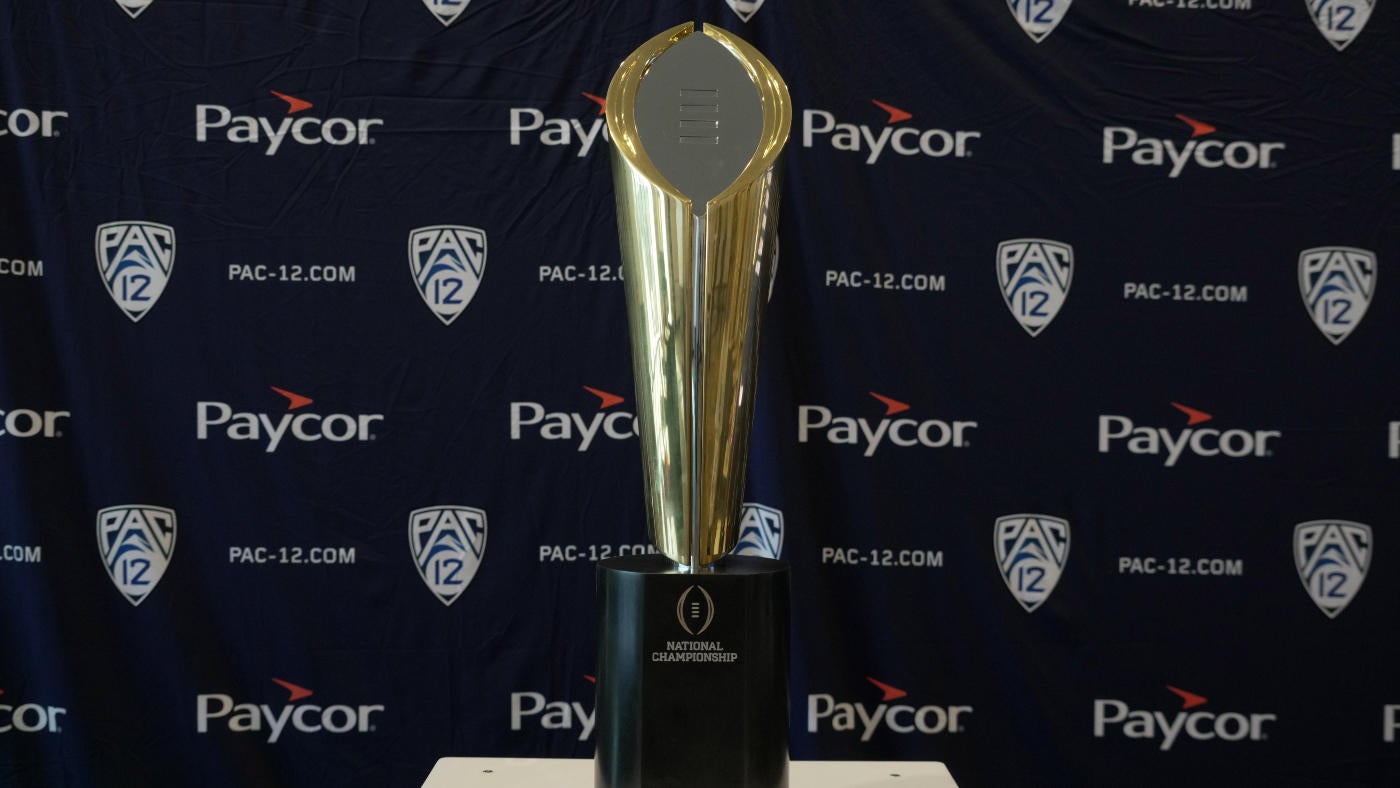
Following the 2023 season, with Oregon and Washington leaving the Pac-12 for the Big Ten, the balance of power in college sports is shifting towards the Big Ten and SEC. This raises an important question about college football’s postseason: How long will these two leagues be satisfied with the agreed-upon structure for the 12-team College Football Playoff (CFP)?
The 12-team CFP, scheduled to start in 2024, had previously decided to grant automatic bids to the top six conference champions in the CFP rankings, with the remaining bids going to the top six teams who didn’t win their conference title. This system was agreed upon when it appeared the Pac-12 would remain a “power conference” with teams like Oregon, Washington, and Utah.
However, with the Big Ten adding four West coast teams and Arizona, Arizona State, Colorado, and Utah leaving for the Big 12, the Pac-12 could become a weaker league relying on teams like Oregon State, Washington State, Cal, and Stanford, if it continues to exist at all. Despite this, the Pac-12 could still potentially produce a team for the CFP under the agreed-upon 12-team structure. Unless, of course, the dominant leagues push for a change to the format due to the Pac-12’s decline.
Possible Elimination of AQ Bids
SEC commissioner Greg Sankey has already suggested that granting any automatic bids during the CFP expansion negotiations was an act of kindness. This current agreement must not sit well with him because the SEC, which only plays an eight-game conference schedule, would benefit greatly if all CFP bids were given out on an at-large basis.
The decision to award automatic bids to the top six conference champions was seen as a way to achieve national representation in the CFP and ensure that a Group of Five conference champion had a chance to compete. With administrators from Group of Five schools involved in the CFP decision-making, the sixth automatic bid was meant to acknowledge their presence.
In 2021, Cincinnati was able to reach the four-team CFP with the support of UCF’s success and their own back-to-back undefeated regular seasons. Under the new 12-team format, a Group of Five school would no longer need extraordinary circumstances to have a shot at the national title. The sixth automatic bid also symbolized that Division I college sports had a future beyond just the Power Five or Big Two conferences.
Now, with the agreed-upon CFP structure, there will potentially be two non-major conferences (assuming the diminished Pac-12 is no longer considered a major conference) competing in the CFP. These conferences would consist of teams like Oregon State, Washington State, Cal, Stanford, Tulane, UTSA, Boise State, Troy, Air Force, SMU, South Alabama, Coastal Carolina, Memphis, Fresno State, Marshall, and Appalachian State.
The list of Group of Five/leftover Pac-12 schools goes on, but you understand the situation.
A Potential “Power Four” Scenario
A 12-team College Football Playoff that includes two conference champions from these conferences would differ from what the Board of Managers originally envisioned. However, it would increase the Cinderella storylines and add to the excitement of the event, similar to what the NCAA Tournament does for basketball. A playoff featuring two conference champions from outside the sport’s traditional powerhouses would also bring more national attention to games played at schools like Boise State and Coastal Carolina.
Moreover, this would add pressure to the power conference teams to perform well in the regular season, a change that would please traditionalists who were against CFP expansion.
But can you already hear it? The murmurs from those in privileged positions. *We already agreed to offer one playoff spot to our less fortunate peers. Now we have to give them two? Let’s reconsider this before a 12-1 Coastal Carolina team makes the CFP over a 9-3 LSU team just because they won the Sun Belt conference.
Big Two Conferences Seeking More
If you believe for a moment that the Big Ten and SEC will be happy with one-sixth or 16.7% of the playoff spots being occupied by these “have-not” conferences, then you haven’t been paying attention to college sports in the past 15 years.
The CFP’s long-term media rights situation remains uncertain after the 2025-26 season. Considering the significant influence of media rights holders in college sports, it is expected that there will be a strong push in the coming months to modify the CFP format in favor of the Big Ten and SEC as the CFP negotiates a new media deal. A three-loss Michigan team is likely more appealing to a network than an 11-1 Fresno State team.
The teams that will be part of the Big Ten and SEC in 2024 make up 11 of the top 14 ranked teams in the CBS Sports 133 preseason rankings. These two conferences will undoubtedly feature the best college football teams in the country.
However, the schools joining these conferences chose financial gain over playoff opportunities. If making the CFP was their main objective, Oregon and Washington would have stayed in the Pac-12 to compete in a conference that is losing high-level competitors like UCLA and USC. The same goes for Oklahoma and Texas, whose paths to the CFP will be tougher in the SEC.
Perhaps there are some noble intentions behind these realignment moves. University administrators may be concerned about the possibility of student-athletes being recognized as employees in the future. In that case, schools would need significant financial strength to avoid cutting non-revenue sports.
Paying competitive salaries to hundreds of athletes across an athletic department would be expensive, and ensuring opportunities and access for all student-athletes is a commendable ideal. It increases the appeal of college sports to a wider audience and promotes the long-term well-being of sports in the country.
If this is truly the motivation behind the realignment trend, then let’s uphold that spirit and give an accessible 12-team College Football Playoff a chance to succeed, even if it means allowing two non-power conference teams to compete with the elite.




